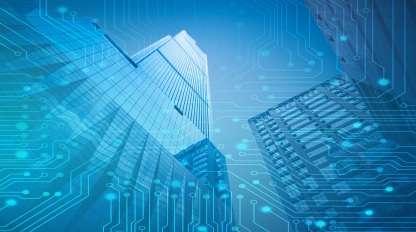Analysis: Advantages and Limitations of Wireless Data Centers

Analysis: Advantages and Limitations of Wireless Data Centers
For data center operators, the idea of a wireless data center sounds like a dream. Eliminating the physical network cables that typically connect servers can greatly simplify the setup and management of data center equipment.

Additionally, wireless network technology continues to evolve and today's wireless networks are capable of transmitting more data over longer distances than previous wireless networks, making the idea of a wireless data center increasingly enticing.
Unfortunately, that doesn't mean most data center operators will abandon physical network cables anytime soon. Although there are practical use cases for data center wireless networks, they are still limited despite advances in wireless technology.
What is a wireless data center?
A wireless data center is a data center that provides connectivity between servers through wireless networks instead of physical cables. In other words, wireless data centers use the same type of wireless connections used in most consumer homes to connect devices to wireless routers.
It's worth noting that it's thought that wireless data centers may not be able to completely get rid of wired network cables. Unless you have wireless network interfaces installed in each server and other devices that need to be connected, you may still need to run Ethernet cables within the server racks, but, for example, you may have a wireless router in each rack, Used to implement wireless connections between server racks and then distribute data packets within the racks via Ethernet.
We should also note that wireless data centers still have power lines. While wireless power is a thing, the technology isn't advanced enough to be practical in data centers, where ultra-reliable, high-capacity power is critical.
Advantages of Wireless Data Centers
To date, few data centers have deployed wireless networks. The trend of data center networking is still closely related to physical cables.
But by switching to a wireless approach, data center operators may gain these important benefits:
- Fewer cables: Cables take up a lot of physical space in traditional data centers, and figuring out which cables go where can be a daunting task. Wireless data centers simplify this challenge.
- Network Deployment: Deploying new networks using wireless technology is faster and easier because wireless networks do not require physical cables.
- Higher capacity: The number of connections that a wired network can support is typically limited by the physical connections available on routers and switches, whereas wireless networks are not limited by this.
- Lower costs: Because wireless networks do not require cables, they can reduce the cost for data center operators to deploy the network.
Simply put, wireless data centers offer a more convenient and flexible approach to networking at a lower price point.
Data Center Wireless Network Challenges
On the other hand, wireless data centers also suffer from some important limitations:
(1) Network throughput
One of the biggest limitations is that wireless networks have lower bandwidth capacity than most wired networks. The latest wireless standard, 802.11ax, supports maximum speeds of less than 10 Gbps, a fraction of the hundreds of gigabytes per second that wired Ethernet can transmit.
For data centers with high network throughput requirements, wireless networks are not fast enough.
(2) Security
Modern wireless network security technology has come a long way since most networks were unencrypted or relied on easily cracked encryption algorithms (such as WEP). But ultimately, wireless networks are less secure than wired networks because anyone physically near the wireless router can intercept and possibly decode packets flowing through the wireless network, which is harder to do with wired networks. Because you need access to the line to sniff packets, you encounter the security controls of the physical data center in the process.
Beyond that, someone looking to disrupt data center operations might do so by interfering with the wireless network (a type of denial-of-service attack that wireless data centers are susceptible to).
(3) Network interference and performance issues
Even if no one intentionally interferes with a wireless network, wireless data centers can experience poor connectivity due to interference between networks using the same frequencies. Generally speaking, packet loss, poor latency, and other performance issues tend to be higher when using wireless networks, which are not as reliable as wired connections.
So when does a wireless data center make sense?
The above challenges don't mean wireless data centers are impossible. Under the right circumstances, going wireless might make sense, at least for some data center equipment.
For example, if you need to connect servers that are far apart from each other on a data center floor, and the workloads running on those servers don't require particularly high network throughput or reliability, it might be better than setting up wireless links between those servers. Laying cables is simpler and more cost-effective.
Likewise, wireless networks can provide good connectivity for monitoring systems and other ancillary equipment that help power data centers, which typically don't require much bandwidth and can tolerate the occasional loss of packets or connections.
in conclusion
However, wireless networking may not be a practical solution for large numbers of servers in large-scale data centers. This may change over time if wireless technology continues to advance (although wireless technology with sufficient performance to meet the needs of most data centers has yet to emerge).
As a result, most data center operators don't expect to ditch network cables anytime soon, but at least in some cases they may be able to simplify network management by leveraging wireless connectivity where it makes sense.